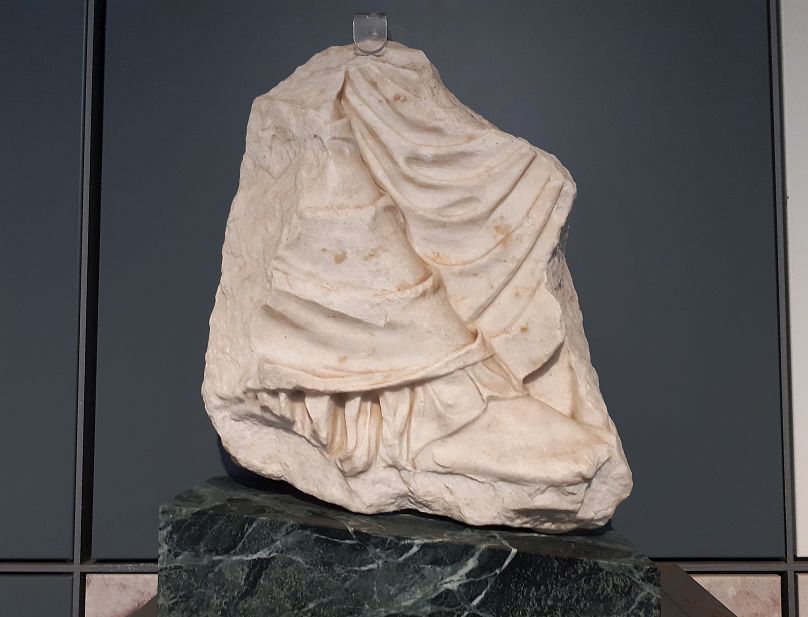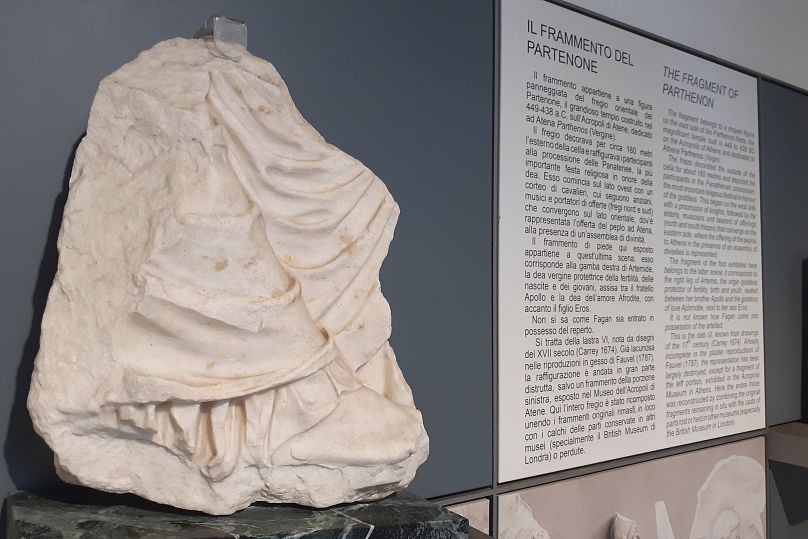About half the surviving 5th century B.C. sculptures that decorated the Parthenon temple on the Acropolis are in the British Museum in London, which has long resisted Greek appeals for their return.
Italy has announced it will lend a fragment of the Parthenon Sculptures back to its native Greece, in what both sides hope will become a permanent return that might encourage the UK to repatriate the Parthenon marbles removed by Lord Elgin in the early 19th century.
Sicily's regional archaeological museum said Wednesday it had signed an agreement with the Acropolis Museum in Athens for a once-renewable, four-year loan of the small white marble piece it has, in exchange for a loan of a statue and vase.
But the ultimate aim, Sicily's A. Salinas Archaeological Museum said in a statement, is the "indefinite return" of the fragment to Athens.
"It is an important event for us, also an important moment because it links two ancient and prestigious museums of the Mediterranean: the Salinas museum, which is the oldest museum in Sicily, with the museum of the Acropolis of Athens, which needs no introduction because it is perhaps one of the most famous and deservedly famous museums in the world," added the museum director, Caterina Greco.
"This exchange unites these two structures under the banner of a cultural collaboration that binds and strengthens even more the cultural identity that binds Sicily to Greece from many points of view: the exchange of artifacts, the enhancement of joint initiatives, and a whole process that will link our museum to that of Athens for a number of years," she went on.
About half the surviving 5th century B.C. sculptures that decorated the Parthenon temple on the Acropolis are in the British Museum in London, which has long resisted Greek appeals for their return.
However, small fragments are also held in other European museums.
The piece lent by Italy is the right foot of a draped figure of Artemis, the Greek goddess of the hunt, originally located on the eastern side of a 160-metre sculpted frieze that ran around the temple.
It came to Palermo by way of a 19th century English consul in Sicily, Robert Fagan, although it is not known how Fagan, an amateur archaeologist, acquired the fragment.
One theory suggests it might have been given to him by Elgin, the British ambassador who excavated the bulk of the ancient Parthenon marbles between 1801 and 1804 before selling them to the British Museum in 1816, where the artifacts are currently on display.
After Fagan died, his widow sold the fragment to the University of Palermo's Regio museum, which became the A. Salinas regional museum, the statement said.
The statement quoted Greek authorities as praising the initiative in the hope that it encourages the British Museum to return its sculptures.
The pieces in question — 17 figures from the building's pediments and part of the frieze — have been the subject of a long dispute between Britain and Greece, which has renewed its bid to bring the marbles home.
Britain maintains that Elgin acquired the sculptures legally when Greece was ruled by the Ottomans.
The Greek government says they were stolen and wants them returned for display in the Acropolis Museum that opened in 2009.
The fragment has been loaned to Athens in the past, but for short periods of time in 2002 and 2008.
Sicily's regional authorities have initiated talks with the Culture Ministry to make the loan permanent, putting it on the agenda of a ministry committee that handles such returns, the statement added.
Italy has been at the forefront of international efforts to recover antiquities that were looted from its territory and ended up in museums and private collections around the world.
It has also been on the returning end of the restitution market when it finds antiquities or artworks that were illegally brought into the country.
In exchange for receiving the foot fragment, the Acropolis Museum is loaning the Palermo museum a 5th century B.C., marble statue of Athena and a terracotta amphora in the linear, geometric style that dates from the mid-8th century B.C., according to the statement.













